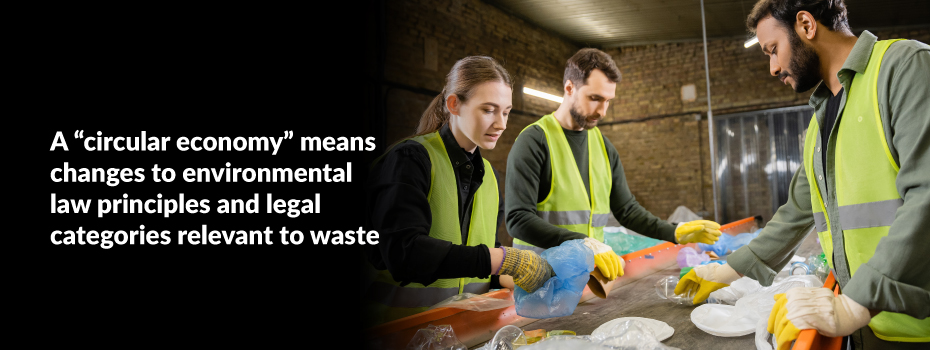
A “circular economy” means changes to environmental law principles and legal categories relevant to waste
29 November 2023 02:31
Elizabeth Wild and Leon Batchelor NORTON ROSE FULBRIGHT AUSTRALIA
Introduction
The focus of Australian state and territory governments on implementing changes to waste and resource recovery regimes continues apace following the development of the National Waste Policy Action Plan in 2019 and the consequential bans on the export of certain recyclable materials. The establishment of a circular economy-focused legal regime for the regulation of the waste and resource recovery sector and, more broadly, across the supply chain of waste products, requires action by governments on a number of levels.
A recent example of substantive legislative change is the Circular Economy (Waste Reduction and Recycling) Act 2021 (Vic) (CEWRR Act) and related regulations, which gives effect to a number of circular economy reforms being implemented by the Victorian government. The CEWRR Act is notable for the breadth of its scope and the alignment of its strategic principles with circular economy outcomes.
In NSW, the Independent Review of the NSW Resource Recovery Framework by Dr Cathy Wilkinson (Wilkinson Review) published in September 2022 contained 22 recommendations for the improvement of the resource recovery framework. The NSW EPA published its Response to the Independent Review of the NSW Resource Recovery Framework (EPA Response) in December 2022, providing “in principle” or direct support for each of the 22 recommendations of the Wilkinson Review. A number of recommendations foreshadow changes to regulatory settings for resource recovery in NSW, including legislative change. Relevantly, some key supported changes to the framework include exploring end-of-waste outcomes and definitional changes to the concept of waste.
In the context of growing governmental and industry interest in the circular economy, some common themes have emerged across State-level approaches in relation to the laws governing the waste and resource recovery sector. First, legislatures and regulators have come to recognise that for a true circular economy to be established, the primacy of the principle of environmental protection should be modified to allow for risk-weighted decision-making with respect to waste and resource recovery activities. Second, clear guidance in the form of decisional rules for materials that have passed through the circular economy from “waste” to become a “resource” is likely to be required, including adjustments to the definition of “waste” where the risk of environmental harm is determined to be acceptable.
This article comes from the experts behind the Australian Environment Review. This bulletin provides updates and analysis on developments in environmental law throughout Australia and internationally. It includes in-depth commentary on government policy and legislation, as well as significant court cases.
Subscribers to the Australian Environment Review can access the full article HERE.
Enter your details to access the full article.
 LexisNexis
LexisNexis